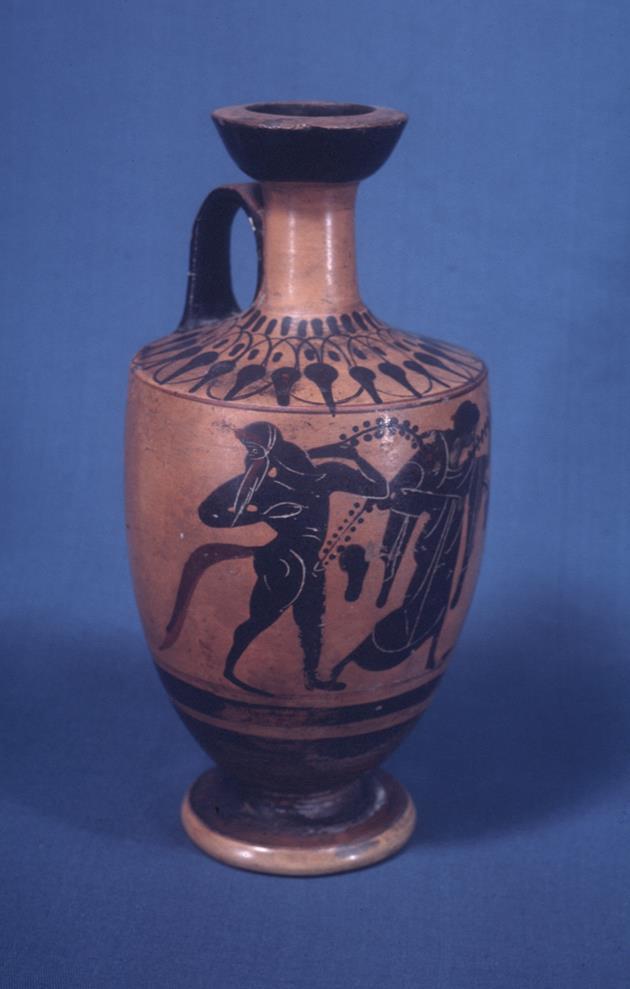Oil or Perfume Container: Lekythos
ca. 500 B.C.
This lekythos, a special flask for perfumed oil, is decorated in the black-figure style with a type of scene that was very popular in the later half of the sixth century B.C.E. On it we see the mythical followers of Dionysos, the Greek god of wine, engaged in a drunken dance with stylized vines and clusters of grapes in the background. Two satyrs are shown, each with human legs and feet, horse tails and ears, as well as snub noses and wild hair. Often ithyphallic, satyrs are usually shown in Greek art making music, dancing, working at wine-making, as well as pursuing and raping animals or women. As such they symbolize the effects of immoderate drinking, a type of behavior that is certainly to be avoided by the guardians of Plato's just city ('Republic' 398d). Also shown here is a maenad, another demoniac votary of Dionysos, a wild drunken woman who typically makes music, dances, and rips asunder animals and occasionally humans. She is wearing a chiton and a himation as well as a wreath on her head. Her features, once rendered in added white paint, are now lost. Added reddish purple paint, however, survives on the folds of her drapery as well as on the tails and beards of the satyrs.
Ceramic with paint (black-figure ware)
7 1/4 in. (18.4 cm)
Girth: 2 5/16 in.
Norman and Amelia Davis Classical Collection
70.100

